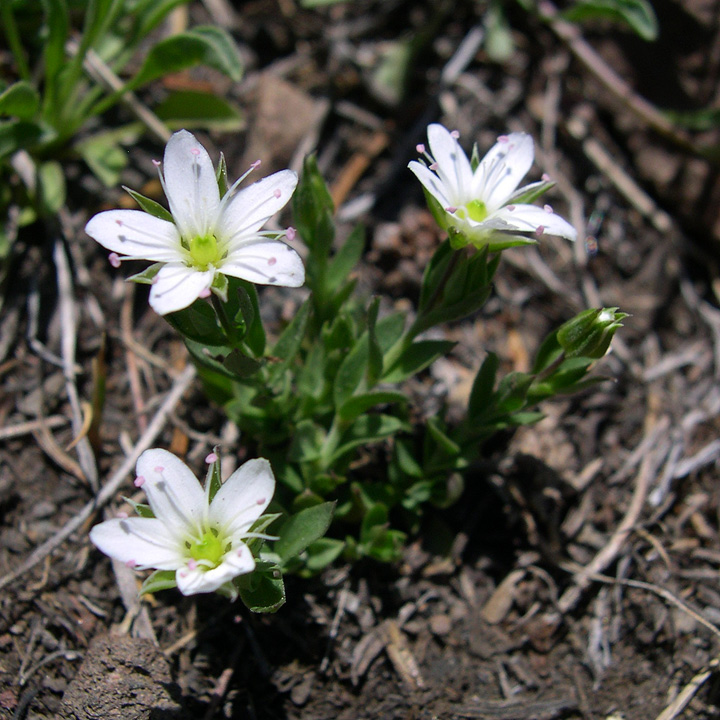|
Family: Caryophyllaceae |
Plants annual or perennial, sometimes densely matted. Taproots filiform to moderately thickened; rhizomes slender. Stems prostrate to ascending or erect, simple or branched, terete to ellipsoid, angular or grooved. Leaves mostly connate, mostly sessile, not congested at or near base of flowering stem; blade 1- or 3-5-veined, rarely linear or linear-lanceolate to usually elliptic to ovate or rarely orbiculate, sometimes subsucculent or succulent, apex blunt or obtuse to acute, acuminate, or apiculate. Inflorescences terminal or axillary open cymes, or flowers solitary; bracts paired, smaller, foliaceous. Pedicels erect or ascending to reflexed in fruit. Flowers: perianth and androecium hypogynous; sepals 5, distinct or barely connate proximally, green or rarely distally purple, lanceolate to broadly ovate, 2-5 mm, margins foliaceous or white and scarious, apex obtuse to rounded or acute to acuminate, not hooded; petals 5 or absent, white, not clawed, blade apex entire; nectaries at base of filaments opposite sepals; stamens 10 (ca. 8 in A. livermorensis), arising from base of ovary; filaments distinct; staminodes absent; styles 3, filiform, 0.5-2 mm, glabrous proximally; stigmas 3, linear along adaxial surfaces of styles, papillate (30×). Capsules broadly ellipsoid or ovoid to cylindric, opening by 6 ascending to recurved teeth; carpophore absent. Seeds [1-]5-35, brown to dark brown or black, reniform or suborbicular, laterally compressed or not, shiny or dull, smooth, rugulose, or tuberculate, marginal wing absent, appendage absent. x = [7, 8-] 10, 11. Fls solitary or in terminal cymes; sep 5; pet 5, white, entire to emarginate; stamens normally 10; styles (2)3(-5); ovary unilocular; ovules numerous; primary valves of the capsule 3, entire or 2-cleft; seeds ±reniform; low annual or perennial herbs without stipules. (Minuartia, Moehringia, Sabulina) 250, widespread Gleason, Henry A. & Cronquist, Arthur J. 1991. Manual of vascular plants of northeastern United States and adjacent Canada. lxxv + 910 pp. ©The New York Botanical Garden. All rights reserved. Used by permission. |


